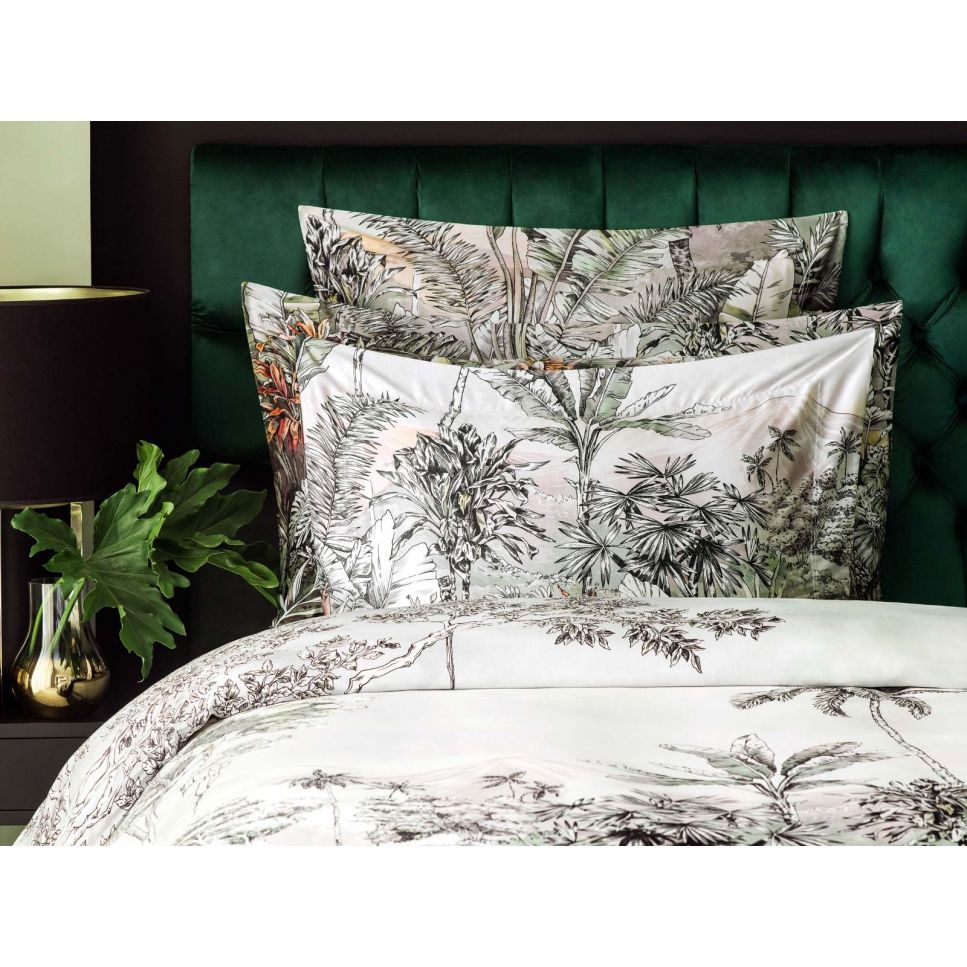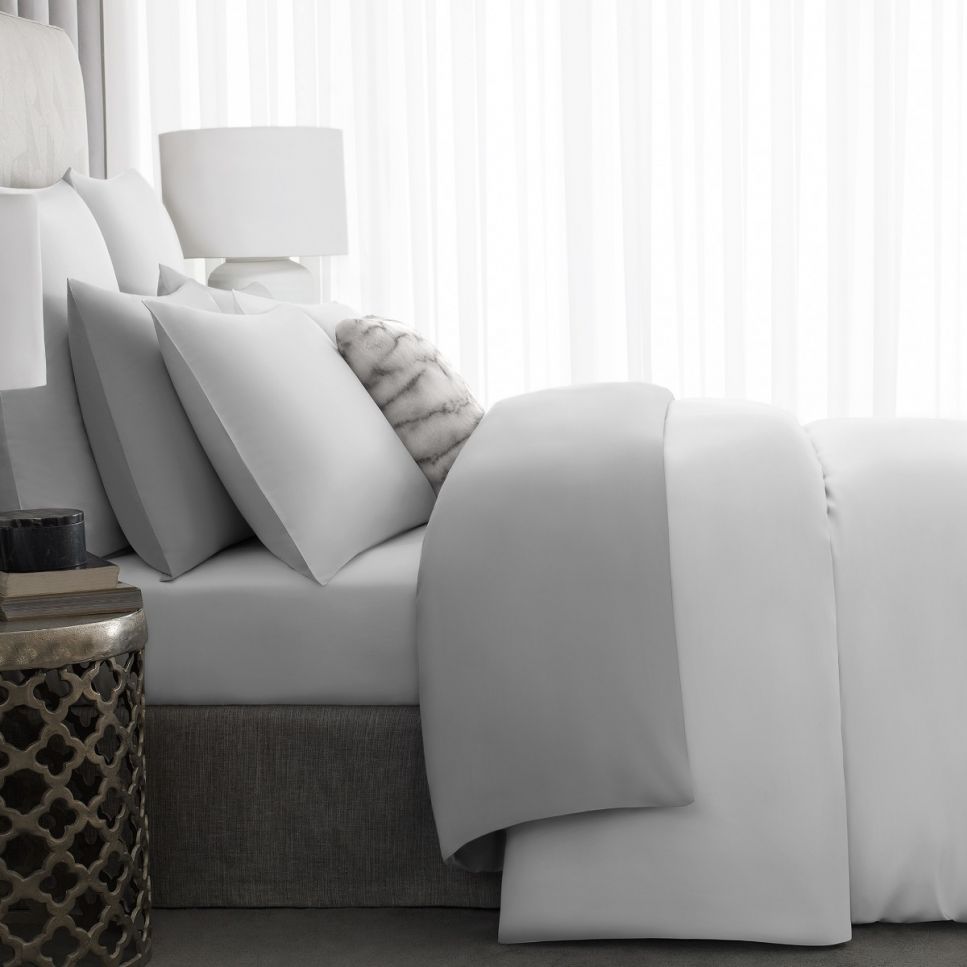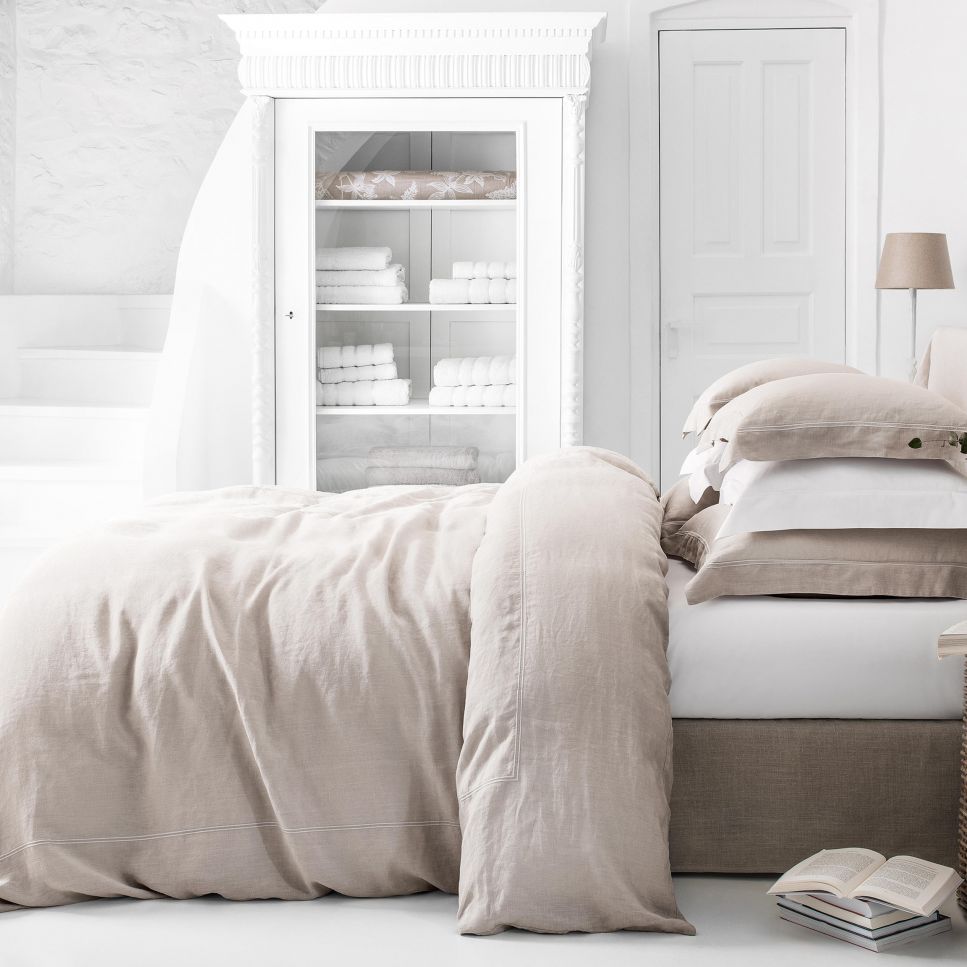What Is Flax Linen & How to Choose the Best
What is flax linen?
Textiles derived from flax plant fibers are known as flax linen. It is a well-known fabric for its adaptability and eco-friendly features because it is natural, breathable, and strong.
Flax linen is renowned for its superior moisture-wicking and absorption abilities, making it the perfect fabric for bedding and clothes for warm climates. Its organic appeal is enhanced by the fabric's unusual texture and frequent appearance of mild slubbing.
Given that flax plants need less water and pesticides to grow, flax linen is renowned for its sustainability, making it a sustainable and green option for conscientious buyers.
Linen fabric production
How is the world’s most eco-friendly and hygienic fabric made? This delicate plant is an eye-catcher thanks to its bright blue flowers. Flax fields are as gorgeous as blooming lavender, its petals astonishing with their pure heavenly shade.
The traditional technology of flax production and processing hasn’t changed for centuries.
- Flax plants and the roots are pulled out of the ground.
- Stalks are dried and laid in a field to soften the fibers and easily separate them, in the end producing retted straw.
- Stalks are beaten and raked (freed from the seed heads).
- The resulting fibers are again taken to the fields to make them more pliable.
- Fibers are dried and separated, removing the coarse parts of the stem and extracting the soft core. To achieve this, they are crushed and tousled.
- Tousled flax is combed and pulled into slivers that can be spun into yarn.
Harvesting flax materials used to be a complicated business, but the introduction of machines has streamlined this process: machines are used to gather, grind, crush and tousle flax. Nevertheless, the processing of fibers and the production of linen fabric is quite labor-intensive, which affects the final cost of these textile finished products.
Why do people choose linen sheets?
There are several reasons why people prefer linen sheets. First and foremost, linen is renowned for its superb breathability, which makes it perfect for hot sleepers or warm locations. Natural fibers in the cloth drain away moisture and promote airflow, keeping you cool and cozy all night long.
Furthermore, linen sheets are incredibly strong and can endure repeated washings without losing their quality. With each wash, they also get softer and more supple, increasing how comfortable they are in general.
Because it is inherently antibacterial and hypoallergenic, linen is a fantastic material for people with allergies or sensitive skin. Last but not least, linen sheets have a classic, refined look that brings a sense of luxury to any bedroom decor.
What is the difference between linen and flax linen?
Although flax linen and linen are frequently used interchangeably, there is a slight distinction between the two. Linum usitatissimum is the scientific name for the flax plant, which produces the fibers used to make linen, a type of cloth. On the other hand, the term “flax linen” makes it clear that the fabric is manufactured from the flax plant.
The fibers used to make linen fabric come from flax. For its robust and long-lasting fibers, the plant has been domesticated for thousands of years. Again, the term "flax linen" highlights the fabric's natural nature and the fact that it is only created from the flax plant.
In conclusion, language serves as the primary point of distinction. While flax linen specifically refers to linen created from the flax plant, linen is a broad phrase that covers clothes made from flax fibers.
Both phrases ultimately refer to the same kind of fabric, which is well-known for its coolness, breathability, and absorbency, making it a popular option for textiles used in clothes, bedding, and around the house.
Is European flax linen the best?
The textile industry holds European flax linen in high regard for its remarkable quality and many appealing characteristics, particularly French and Belgian linen. These linens are usually regarded as among the best on the market.
The high fiber quality of French and Belgian linen is one of their distinguishing qualities. These linens are made from flax that has been carefully grown and processed into long, strong linen fibers. Because of its durability and resistance to tearing, linen cloth is sturdy and incredibly long-lasting.
Moreover, strict quality and environmental control procedures are used in the production of Belgian and French flax linen.
These linens are frequently made using time-honored techniques that have been handed down through the years, guaranteeing dedication to the highest quality and attention to detail. The outstanding quality of European flax linen is also a result of the fact that it is frequently grown in areas with ideal climatic conditions.
Another distinguishing quality of French and Belgian linen is their texture. The textiles are smooth and delicate to the touch, and they feel natural and opulent. With time and use, the texture will only get better as the linen gets softer and cozier with each wash.
Additionally, Belgian and French flax linen have superb moisture-wicking and breathability qualities. It is well known that linen can regulate body temperature and absorb moisture, keeping those who use it warm in colder climes and cool in hotter ones.
In conclusion, French and Belgian linen's extraordinary quality can be due to their superior fiber quality, traditional manufacturing techniques, optimal growth environments, sumptuous texture, and remarkable breathability. Due to these characteristics, European flax linen, especially the kind from Belgium and France, is highly prized and regarded as some of the best in the world.
How to care for flax linen
Flax isn’t as high-maintenance in care as silk, but there are a few things to keep in mind to preserve its look and condition.
Washing: Wash at a low temperature of 30-40°C. Medium spin. Do not tumble dry.
Ironing: Use the maximum temperature when the fabric is wet to iron it out. Use steam.
It is also safe to get flax line machine washed with cold water, and this can make it softer when you wash repeatedly.
The downside to these fabrics is that they crease quickly. You’ll have to iron linen items often, or just accept the laidback, relaxed vibe they project.
Though the mechanical process of linen production is rather labor-intensive, and it is more expensive than cotton, the popularity of this material is ever increasing because of its environmental sustainability and extraordinary properties. The extreme strength and durability of the fibers significantly extend the service life of such bedding and decorative textiles.
 Bed linen set ILBAMA
Bed linen set ILBAMA
The durability of linen sheets
With good care, linen sheets can endure for many decades before they need to be changed, even though they might start to show indications of wear after three to five years.
Examine the weave of the sheets before purchasing: The durability of an extremely loose weave with obvious gaps between the threads is reduced. A more expensive set will often be of superior quality.
Pay close attention to the packaging's wording as well. Frequently, what is sold as French or Belgian linen refers to the place where the flax was grown, rather than the place where the linen was really woven and produced.
When is flax linen the right choice?
One group of people who will benefit from the cooling qualities of flax linen is hot sleepers, and those who suffer from allergies may find respite from their symptoms by retiring to a bed of linen sheets at night. Being thicker than cotton sheets, linen may not be suitable for someone who likes to sleep without extra weight on them.
Many linen sheets sold today have been "stone washed" or "enzyme washed," which accelerates the softening process and gives the fabric an aged appearance and feel.
If you have sensitive skin, you may want to stay away from stone washing and enzyme washing, because they both entail beating pumice on the fabric in large drums.
 Bed linen set Avari white
Bed linen set Avari white
FAQ
Is flax linen good quality?
Yes, flax linen is renowned for being of good quality. The flax plant is used to create a strong and breathable fabric. Flax linen is a well-liked option for bedding, clothes, and household textiles due to its natural texture, strength, and capacity to control body temperature.
Is flax linen better than regular linen?
The terms "flax linen" and "regular linen" refer to the same material. The source plant for linen is flax. Because they are fundamentally the same material, flax linen and normal linen have no inherent differences.
What is the difference between French linen and flax linen?
French linen is created from flax, whereas linen is made from the fibers of the flax plant, which is how they differ from one another.
French linen typically has a satin weave, giving it a smooth, shining surface and a luxuriant sensation to the touch.
A twill weave is frequently used to weave linen, giving the cloth a rougher, more textured surface that makes it feel less plush to the touch.

